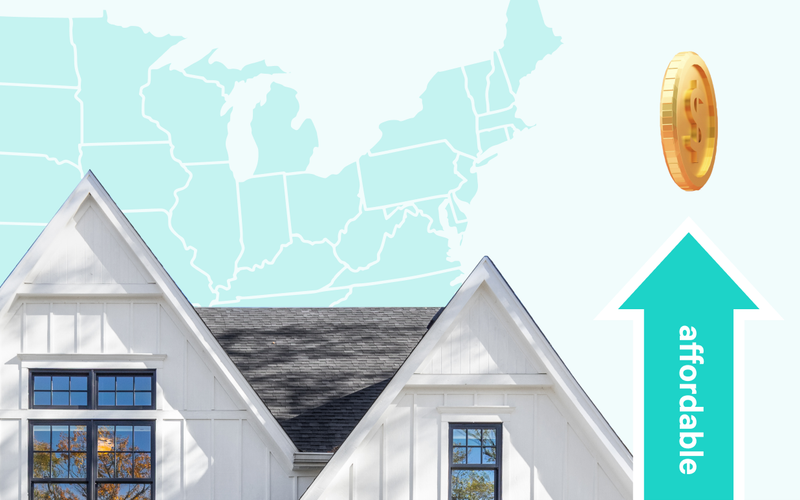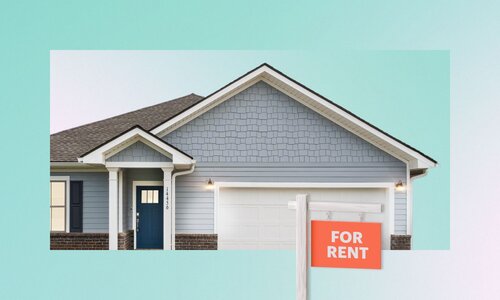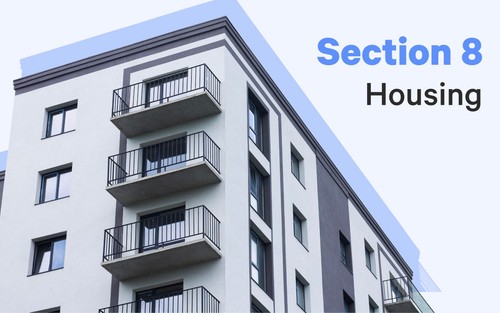Living costs are going up around America thanks to inflation and a global shortage of essential goods. And with 58 percent of the population working from home at least one day a week, according to McKinsey—and 35 percent allowed to do so full-time—it’s never been easier to pack up and move wherever suits you.
So, which are the cheapest states to live in? We’ll be transparent: this is a tricky question to answer. Nearly endless factors affect the total cost of living index in each state, but some of the most notable include:
- median household income
- media home price
- property tax rates
- state income tax rates
- healthcare costs
- transportation costs
- food prices
- entertainment costs
Although we’ll get into some factors that affect the overall cost of living, for the sake of ranking this list, we’re looking exclusively at the typical cost of buying a home according to the Zillow Home Value Index, or ZHVI for short. This index was last updated in August 2022, giving us very recent data to go off of. It’s important to note that the numbers listed here are not the median home price in each state but are calculated based on Zillow’s estimates of the market value of homes currently for sale and how those prices change from month to month based on homebuyer behavior (you can learn more about how they do this here). So, in other words, these prices are theoretically closer to what you might encounter if you start shopping for a home in these states right now.
We’ve also listed some insider intel to help you hold onto more of your dollars regardless of how much it costs to go out to dinner or see a movie. These are other standard thresholds for measuring the average cost of living.
The 10 cheapest states of 2022
So, there are ten states with a lower cost of living than the national average, thanks to the cheapest housing markets in America. Spoiler alert: many are southern and midwestern states, where costs are generally more affordable, and there are fewer big metropolitan areas to tip the scales toward unaffordability. Here they are:
1. West Virginia
ZHVI typical home value: $140,098
Although its state border is just about 2 hours from Washington, D.C., housing prices in West Virginia are far lower than its next-door neighbor. This mountainous state has an annual median household income of $46,836, according to the Federal Reserve Bank of St. Louis. It’s working to increase that by luring in high-paid remote workers with the promise of outdoor recreation and a $12,000 cash bonus for relocating. Yes, you read that correctly: if you’ve got a job outside the state of West Virginia that you can do remotely, you can apply for a relocation grant of $12,000 (to be paid out over two years). If you’ve never visited and like the outdoors, you’re in for a treat. West Virginia’s country roads and newly-minted national park, New River Gorge, are the scenery of dreams. You can hike, climb, paddle, and bike the state’s trails, boulders, rivers, and roads for just the cost of the gear you need to get you there, so if you’re looking for ways to find cheaper entertainment and the lowest cost of living, this might be precisely what you’re looking for.
2. Mississippi
ZHVI typical home value: $168,336
Mississippi often tops the list of most affordable states for more than just its average home price. According to Bankrate’s calculator, if you make $75,000 a year and live in Brooklyn, you’d only need to make about $36,000 per year to afford the same standard of living in Jackson, Mississippi.
3. Arkansas
ZHVI typical home value: $180,819
For outdoor enthusiasts who’ve yet to explore Arkansas, a pleasant surprise is waiting: Bentonville and the surrounding area have some of the most easily accessible trailheads for mountain biking and hiking. The Ozark mountains have persuaded more than a few would-be tourists to stay long-term, and likely in no small part thanks to the sheer affordability of Arkansas when compared to areas with similar outdoor recreation opportunities. For comparison’s sake, according to Bankrate, Arkansas has an overall cost of living index of 89.9, and Bentonville’s cost of living is about 21 percent lower than Denver, another super-outdoorsy city.
4. Oklahoma
ZHVI typical home value: $184,009
Like West Virginia, Oklahoma has some tricks to recruit new residents. Tulsa Remote, an independent group in Tulsa, Oklahoma, will grant $10,000 and a free 3-year membership to a local coworking space to successful applicants with jobs outside Oklahoma willing to relocate within city limits.
5. Iowa
ZHVI typical home value: $193,295
Iowa ranked as the 12th best state to live in on a recent U.S. News & World Report list, in no small part because of its affordability. But that’s not the only thing that makes it an attractive place to live—it ranks sixth in the nation for access to health care, 11th for access and quality of higher education, and has an average high school graduation rate of 91.4%, well above the national average of 85.3%.
Bonus? Your voice is a bit louder in this swing state, which always plays a crucial role in national elections.
6. Kentucky
ZHVI typical home value: $200,144
Kentucky’s overall cost of living ranks roughly dead-center than the rest of the U.S., with an index of 95.2. But if you compare it to California, New York, or Hawaii, the same money will buy you a lot more house. And if you own a business and you’re looking to move it, you’re in luck: Kentucky was ranked as the No. 1 cheapest place to do business in America, according to a 2019 report from CNBC.
7. Kansas
ZHVI typical home value: $208,591
According to the Missouri Economic Research and Information Center, Kansas has an overall cost of living index of 86.4, making it the third most all-around affordable place to live in the U.S. Even in Kansas City—an underrated metropolitan area—you’d only need to make about $40,000 a year to have the same standard of living as you would in Brooklyn at $75,000.
8. Alabama
ZHVI typical home value: $211,090
South of Birmingham and Montgomery, Alabama harbors a relatively little-known secret: this state has a gorgeous gulf coastline far less overblown than the beaches of neighboring Florida. Here, you can get those beach vibes with far less competition. How’s that for quality of life?
Bonus: If you make at least $52,000 per year working a job you can do remotely from the community of Alabama Shoals, you can get a $10,000 cash bonus to move there within six months of being accepted to the Remote Shoals program.
9. Ohio
ZHVI typical home value: $213,335
Despite being home to the country’s 14th-biggest city, Columbus, Ohio, still offers a below-average cost of living. Paying off student loans and looking for cash to help mitigate your debt? Check out Hamilton, Ohio, just north of Cincinnati, which offers up to $10,000 for relocation through its Talent Attraction Program.
10. Louisiana
ZHVI typical home value: $216,350
Beyond the fame, allure, and excitement of New Orleans, Louisiana closes out our list of the top 10 most affordable states. With an overall cost of living index of 92.8 (which means it’s about 7 percent below average overall), life is less expensive in Louisiana across the board. Even in New Orleans, you’d need to make less than $47,000 a year to have the same standard of living as you would at $75,000 in Brooklyn.
Tax benefits and state grants to consider
Eight states have no state income tax, and a ninth, New Hampshire, doesn’t tax earned wages. So if you’re looking for the best state for tax purposes, Wyoming, Alaska, Florida, Nevada, Washington, South Dakota, Texas, and Tennessee are good options.
If you plan to move, you should also research tax benefits for remote workers or new residents. A few states and cities have started getting wise to digital nomad threads and have created financial incentives to attract new blood.
The state of Vermont, for example, has previously wooed prospective new residents with relocation grants of up to $7,500 and is currently relaunching its program with new rules for next year. These programs are getting trendier, so it’s worth a quick Google to see if something piques your interest if you’re considering moving to a less expensive state. While a few states have programs at the government level, others, particularly in the midwest, like Oklahoma, have privately-run programs like Tulsa Remote that are city-specific and independent of support from tax dollars.
What else you need to know
Other states where living costs are generally lower than the American extremes of New York, California, and Hawaii include Missouri, Indiana, New Mexico, and Michigan. Of course, these metrics are all partially calculated by extremes on either end of the spectrum. You won’t find California, New York, or Georgia on affordable housing lists partly because San Francisco, New York City, Atlanta, and other metropolitan areas tip the scales.
Suppose you’re looking to move to a more affordable place for the sheer cost of living advantages. In that case, you can also find data down to the county level from the Council for Community and Economic Research, which publishes a cost of living index each quarter.
And here’s an insider tip on finding incentives to move—think business. Even if you’re single, 25, and a full-time freelance graphic designer who works alone, you might qualify for incentives and business grants if you can find the right program and prove your business has promise and potential to grow. Some of these programs might even offer incentives to help you tap into the local job market or access financing so you can afford a house above the median home value with good potential to appreciate over time.
Invest strategically with Arrived
Real estate is traditionally considered to be a wise investment regardless of what’s going on in the economy. While home prices can fluctuate within markets and across America, they almost always recover in relatively short order.
Take the guesswork out of investing and get into hot markets regardless of the cost of living by buying shares of attractive homes with Arrived. Check out the available inventory of homes today and get started with an investment of virtually any size. Arrived’s expert teams handle maintenance, rent collection, property taxes, home insurance, and everything else. Once you’re in, you can monitor how your investment appreciates and collect dividends from monthly rent.







